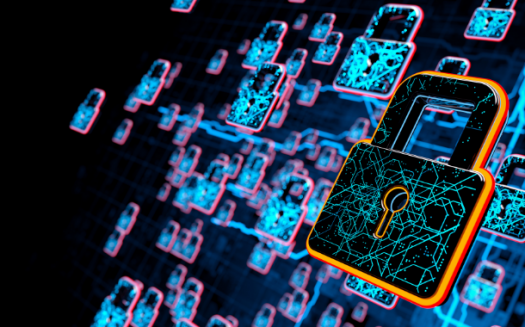According to a Kaspersky Security report, more than 2.57 million phishing attacks were detected across the Middle East, from Egypt to the UAE, Saudi Arabia, Qatar, Kuwait, Bahrain, and Oman in 2020.
A cyber pandemic phenomenon in Middle East
Remote work and increasingly sophisticated hacking tools are contributing to the surging number of ransomware attacks. Traditional forms of ransomware simply encrypt files, while more modern variants go one step further by also transferring potentially sensitive data to the attackers, who then threaten to release them.
Preventing ransomware attacks is also no longer as simple as avoiding suspicious email attachments and installing an antivirus. Threat actors have been increasingly successful at exploiting organisations through phishing, social engineering, and exploiting unpatched or zero-day software vulnerabilities.
In 2020, the UAE has seen a 250% increase in cyberattacks with the rising tide of phishing and ransomware incidents. The UAE government’s top cybersecurity chief warns that the region is facing a cyber pandemic as hackers take advantage of Covid-related digital adoption.

Unfortunately, driven by the unceasing increase in remote work, cyberattacks are going to continue to be an ongoing threat for businesses in 2021. Though ransomware attacks pose an existential threat to businesses, more often than not, little is done to protect against them. Fortunately, there are some easy ways to mitigate risks.
IT teams are the first line of defence against ransomware and can block many attacks before they reach end-users or critical systems. Modern security practices leverage multiple layers of protection. Starting at the outermost layer, using a well-configured firewall and Intrusion Detection, Protection System, IDS and IPS, can help block out large portions of low-level attacks.
Additional network monitoring and analysis tools can then be set up to check for unusual and suspicious traffic patterns, with containment plans in place should the need arise.
On endpoints and servers, IT should ensure that deployed software, operating systems, and anti-malware solutions are up to date. Additionally, user accounts should be well thought out, with each account configured to only allow access to what they need and nothing more. The same concept applies to system administrator accounts, avoiding using a single account that has access to everything. Partitioning access to different systems and minimising access to only what is needed can help drastically reduce the damage inflicted when credentials are leaked.

Maintaining good security also requires all end-users to be well-educated on potential threats, as many breaches have been caused by users falling prey to phishing and social engineering tactics. Training programmes should be in place to provide examples of modern phishing attacks and how social engineering can happen. Additional best-practice knowledge should be shared on handling suspicious e-mails, identifying spoofed websites, and most importantly, how to report a security incident.
Crisis management plans should be well documented and rehearsed. For example, who should handle communications, internally and externally? What processes will be used to conduct auditing, damage analysis, and customer and authority notification, should the need arise?
Internally, IT should always maintain up to date deployment maps of which systems are doing what, which are dependent on one-another. Contingency plans should be in place should a total site shutdown be required to contain or remove the malware.
While employee education and IT teams can mitigate ransomware attacks to a large extent, due to the unpredictable nature of attacks, systems can never be 100% protected.
The only fail-safe way to completely protect digital assets is to have a comprehensive backup strategy in place from the start. This will ensure that if systems are compromised, there will always be a clean version of data to recover from.
One popular backup methodology is the 3-2-1 backup strategy. Simply put, this is 3 copies of your data, across 2 different mediums, with 1 copy offsite. An example of this could be storing your data on an on-premise server, with two backups, one on-site and another
located on the cloud or at a remote site.
Take a real-world case as an example, Synology successfully helped a government entity to streamline, and backup large-scale content creation projects produced by its subsidiary render farm. With 300 virtual machine running multiple tasks, the render farm ultimately leverages Synology’s Active Backup for business to back up its running VMs onto another onsite Synology NAS, while utilising Snapshot Replication and Hyper Backup to automate additional on-site and remote backup tasks. With such structure in place, the rendering farm can preserve multiple data backup at both onsite and offsite locations, drastically mitigating risk of data loss.
There are many more success stories where clients utilise Synology solutions to form their information security and backup strategies. After all, to preserve digital assets in an era of ever-evolving ransomware, Synology believes that proactively backing up files regularly is a necessary step to protect important data.
Learn more about the benefits of backing up with NAS.
By Joanne Weng, Senior Sales Manager, Synology.
This content has been partially sponsored by the vendor.



















